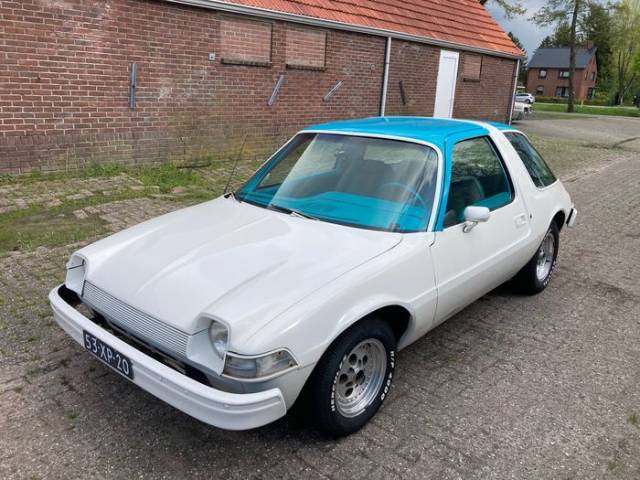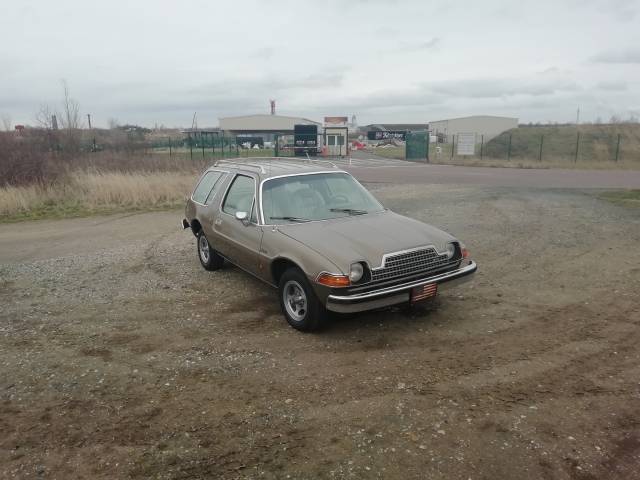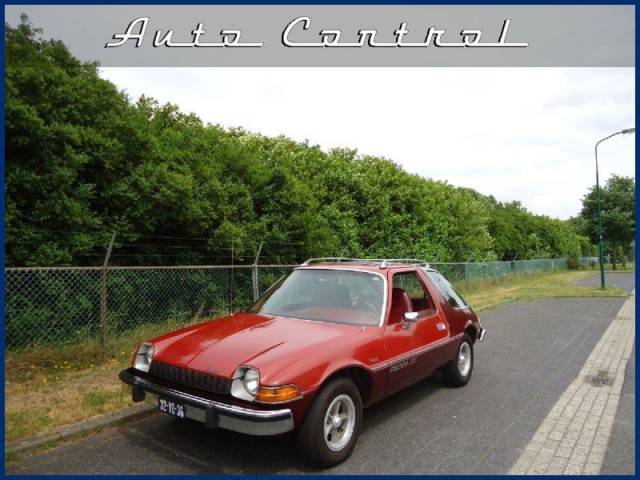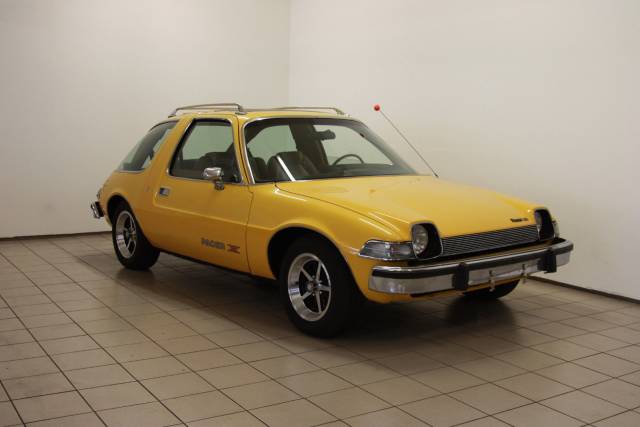AMC Pacer classic cars for sale
The AMC Pacer stands out as one of the most recognisable American compact cars of the 1970s, with its unusual proportions, extensive glasshouse, and focus on occupant safety. Available with straight-six and V8 engines, notable factory options included automatic or manual transmission, air conditioning, a wide array of paint colours, and distinctive interior features like CB radio and moonroof. Genuine California cars often show minimal rust.
Suchergebnisse
Zur Zeit sind keine passenden Inserate zu Ihrer Suche veröffentlicht.
Create search alert
Let yourself be notified as soon as a listing is published that matches your search filters.
Create listing
Do you have a AMC Pacer that you want to sell? Then create a listing now.
Create listingAMC Pacer listing references from Classic Trader
Below you will find listings related to your search that are no longer available on Classic Trader. Use this information to gain insight into availability, value trends, and current pricing for a "AMC Pacer" to make a more informed purchasing decision.

1976 | AMC Pacer

1976 | AMC Pacer
Amc pacer

1978 | AMC Pacer
AMC Pacer Wagon zu verkaufen

1977 | AMC Pacer
"X" Package

1976 | AMC Pacer DL
Buick AMC Pacer

1975 | AMC Pacer
AMC Pacer 1975
Create search alert
Let yourself be notified as soon as a listing is published that matches your search filters.
Create listing
Do you have a AMC Pacer that you want to sell? Then create a listing now.
Create listingIntroduction and history of the AMC Pacer
Introduced in 1975, the AMC Pacer was American Motors Corporation’s bold answer to new safety regulations, shifting consumer tastes, and the energy crisis of the early 1970s. Aiming to deliver a spacious, manoeuvrable urban car, AMC invested heavily in features ahead of their time: wide-body design, asymmetrical doors for easier access, side impact protection, and a laminated windshield. The Pacer became infamous for its rounded 'fishbowl' styling, about 37% of its exterior surface made up of glass. Production ran until 1980, with a distinct presence in the USA and a small number exported, mostly with left-hand drive. A Mexican variant, built by VAM, catered to a local luxury market. While European sales were rare, the Pacer’s quirky character left a lasting imprint in automotive history.
Model history
AMC began designing the Pacer in 1971, initially planning for a lightweight Wankel rotary engine. Ultimately, engineering realities led to the use of robust inline-six powerplants from the AMC range, later joined by a V8 option. The original Pacer arrived as a coupe, followed by the roomier Wagon from 1977, which resiliently outsold the coupe thereafter. Specialist editions cropped up across markets and years, reflecting consumer and regulatory trends—such as the Sundowner for California, the denim-themed Levi’s trim, and premium Limited variants with leather and advanced features. UK imports remained left-hand drive, causing practical quirks given the Pacer’s near-2m width. Total production exceeded 280,000 units, with a sharp drop in demand by the late 1970s as changing market needs and fuel prices outpaced the Pacer’s design.
Highlights of the AMC Pacer
No other compact car of the era combined the length of 4.32 metres and an imposing width of 1.96 metres. The right-side door was deliberately wider (by 10cm) to aid rear seat access, while about 37% of exterior surface was glass, resulting in the 'Flying Fishbowl' moniker. Advanced safety design, power steering, disc brakes, and an optional moonroof were notable. Air conditioning, cruise control, CB radio, and vinyl or denim-trimmed interiors contributed to its unusual specification diversity.
Technical data
Special Editions and Collectible Models
The X-Package (1975–1978), later renamed Sport, included sportier trim. The D/L (Deluxe) was always available, and the Limited (1979–1980) offered leather and luxury features. The 1977–1978 Levi’s Edition stood out with blue denim-themed interiors and signature Levi’s tags. The Sundowner complied with strict California emissions rules. In Mexico, VAM versions included unique engine options. A small number of EV Pacers were factory converted for demonstration, while specialist customisers like Carl Green offered radically modified bodywork.
Weak Spots and Common Issues
Six-cylinder engines are known for intake and exhaust manifold gasket leaks, requiring regular replacement. Vehicles from drier climates like California tend to have less rust, while those from wetter environments need careful inspection of the underbody and wheel arches. Air conditioning systems and cruise control units were popular but are often found non-functional or depleted. Watch for wear on optional moonroofs and CB radio units. Models equipped with the original whitewall tyres and intact documentation are especially valued.
Engine and Performance, Transmission and Handling
The Pacer’s handling was markedly different from typical American compacts of the 1970s, due in part to the wide track and rack-and-pinion steering. The chassis, combined with a relatively short body, offered excellent stability and a turning circle suited to city use. Power, particularly in the V8, was robust for the segment but fuel consumption was higher than buyers might expect for a compact. Buyers could choose between manual and automatic gearboxes. The 4.2-litre six-cylinder with power steering and automatic gearbox proved most popular at the time, combining robust torque with manageable drivability. The later V8 models are now highly sought after among enthusiasts for their distinctive driving character.
Interior, Comfort, Exterior and design
Richard Teague’s design for the Pacer broke convention, emphasising interior space and visibility: the immense glass area ensured a panoramic view, while the asymmetrical door design aided rear-seat access. Factory options spanned from metallic gold paint to CB radios, whitewall tyres, full headliners, and moonroofs. Upholstery included standard vinyl, optional cloth, or the distinctive Levi’s denim trim. Accessories ranged from air conditioning to cruise control—a rarity among compact American cars of the time. The wide, low profile was as much a statement as it was practical for stability.
Other relevant features
All AMC Pacers are eligible for historic vehicle (H) registration, and vehicles with documented restoration or upkeep, especially in full specification with original options, are especially appreciated in the classic community. The Pacer’s unique shape means parts supply for glass and brightwork can be specialist-oriented, but mechanical spares (for sixes and V8s) are comparably accessible due to AMC’s shared component strategy.
Summary
The AMC Pacer remains unmatched for its combination of performance, practicality, and individuality in the American compact car sector. On Classic Trader, it constitutes the full extent of AMC inventory, supported by steady interest owing to its rarity and distinctive style in today’s market. With robust mechanics, expansive options, and lasting cultural significance, the Pacer stands out as one of the most memorable designs of its time.